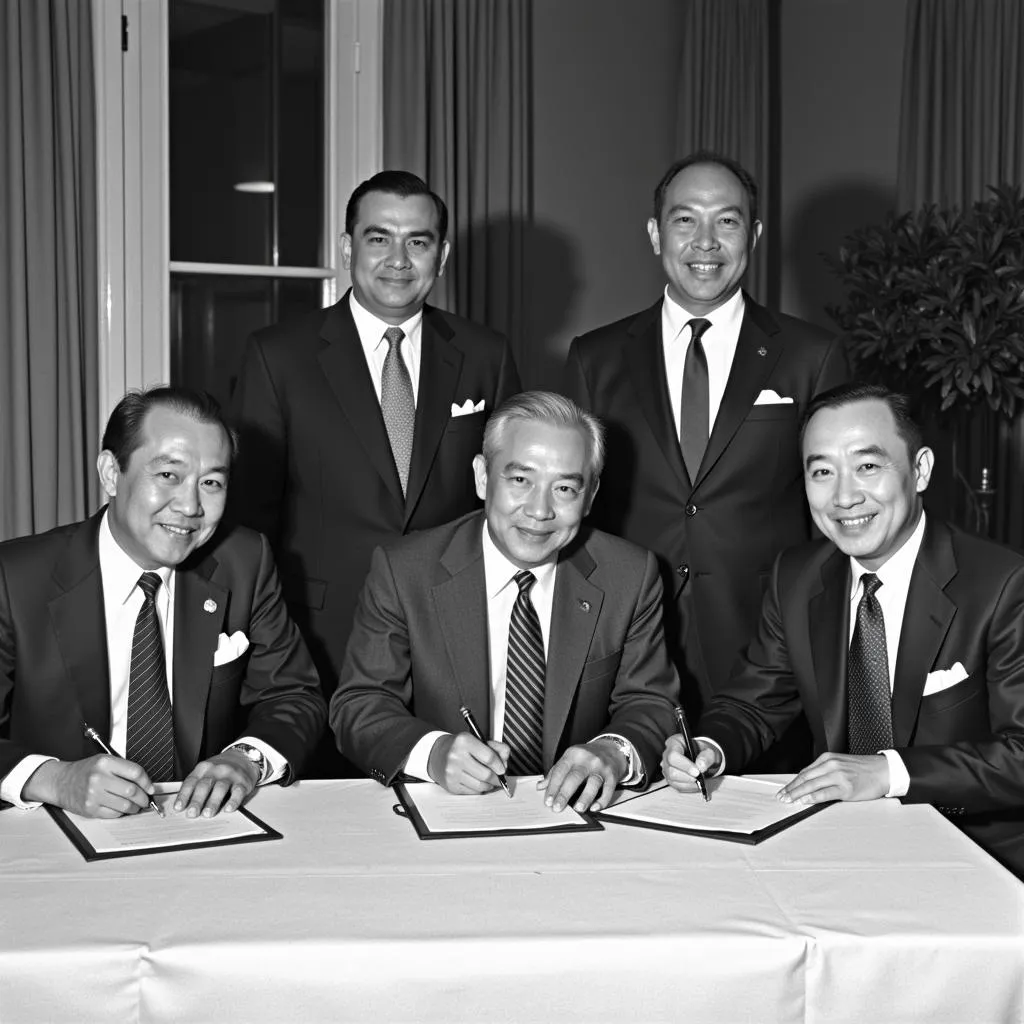ASEAN, a geographical and economic powerhouse, is a term often encountered in global news and discussions. But what exactly does ASEAN stand for in English, and why should you care?
This article delves into the meaning of the acronym ASEAN, exploring its significance, history, and impact on Southeast Asia and the world.
Unpacking the ASEAN Acronym: Association of Southeast Asian Nations
ASEAN stands for the Association of Southeast Asian Nations. This regional intergovernmental organization comprises ten Southeast Asian countries:
- Brunei
- Cambodia
- Indonesia
- Laos
- Malaysia
- Myanmar
- Philippines
- Singapore
- Thailand
- Vietnam
A Brief History of ASEAN: From Cold War Origins to Regional Powerhouse
The association’s roots can be traced back to 1967 during the height of the Cold War. Driven by a shared desire for peace, stability, and economic growth, five founding members – Indonesia, Malaysia, the Philippines, Singapore, and Thailand – signed the ASEAN Declaration (also known as the Bangkok Declaration), marking the official birth of ASEAN.
 ASEAN Founding Members
ASEAN Founding Members
Over the decades, ASEAN gradually expanded its membership to include all ten Southeast Asian nations. This expansion, coupled with a shift towards deeper economic integration, transformed ASEAN into a formidable regional bloc.
Why is ASEAN Important?
Understanding ASEAN’s significance requires looking beyond its geographical location. The association plays a crucial role in:
1. Promoting Regional Peace and Stability: ASEAN has been instrumental in fostering dialogue and cooperation among its member states, helping to maintain peace and prevent conflicts in the region.
2. Driving Economic Growth: ASEAN has emerged as a major global economic force, boasting a combined GDP exceeding US$3 trillion. The organization actively promotes trade liberalization and economic integration among its members, facilitating a vibrant and interconnected regional economy.
3. Addressing Shared Challenges: From climate change and transnational crime to pandemics and disaster management, ASEAN provides a platform for member states to collaborate on addressing pressing regional issues.
4. Amplifying Southeast Asia’s Voice on the Global Stage: As a unified bloc, ASEAN carries more weight in international forums, enabling it to advocate for the interests of Southeast Asia and contribute to shaping the global agenda.
 ASEAN Summit
ASEAN Summit
ASEAN’s Impact on Southeast Asia: A Transformative Force
ASEAN’s influence on Southeast Asia is undeniable. The organization has significantly contributed to:
- Accelerated Economic Development: Trade liberalization and economic integration initiatives, such as the ASEAN Free Trade Area (AFTA) and the Regional Comprehensive Economic Partnership (RCEP), have spurred economic growth and increased prosperity across the region.
- Enhanced Regional Connectivity: Infrastructure development projects, facilitated by ASEAN, have improved connectivity within Southeast Asia, fostering closer ties among its people and economies.
- Strengthened Regional Identity: Through cultural exchanges and people-to-people connections, ASEAN has fostered a sense of shared identity and belonging among the diverse population of Southeast Asia.
Looking Ahead: The Future of ASEAN
ASEAN faces challenges such as geopolitical tensions, economic disparities among member states, and the need to further strengthen its institutions. However, the association remains committed to its vision of a peaceful, prosperous, and integrated Southeast Asia.
Conclusion: ASEAN – A Beacon of Hope and Cooperation
ASEAN stands as a testament to the power of regional cooperation. By embracing dialogue, collaboration, and a shared vision, ASEAN has transformed Southeast Asia into a region of peace, stability, and economic dynamism. As the association continues to evolve, it remains a beacon of hope and a model for regional integration worldwide.
FAQs about ASEAN
1. What is the main goal of ASEAN?
ASEAN’s primary goal is to promote regional peace, stability, and economic growth among its member states in Southeast Asia.
2. How does ASEAN benefit its member countries?
ASEAN offers several benefits to its member countries, including enhanced economic opportunities through trade agreements, increased regional security and stability, a platform for addressing shared challenges, and a stronger voice on the global stage.
3. What are some of ASEAN’s major achievements?
ASEAN has achieved significant milestones, such as the establishment of the ASEAN Free Trade Area (AFTA), the creation of a framework for political and security cooperation, and the successful management of regional crises.
4. How can I learn more about ASEAN?
You can explore our website for a wealth of information on ASEAN, including its history, member states, key initiatives, and future directions. asean 50 facts provides a comprehensive overview of this dynamic regional organization.
5. What is the role of the ASEAN Secretariat?
The ASEAN Secretariat, based in Jakarta, Indonesia, serves as the administrative and operational hub of the organization. It supports ASEAN’s various councils and committees, coordinates activities, and implements projects.
Need More Information?
Do you have further questions or need more information about ASEAN and Southeast Asia? Contact us! Our team at Asean Media is dedicated to providing you with valuable insights and resources.
Contact Information:
Phone: 0369020373
Email: [email protected]
Address: Thon Ngoc Lien, Hiep Hoa, Bac Giang, Vietnam
We are available 24/7 to assist you.


